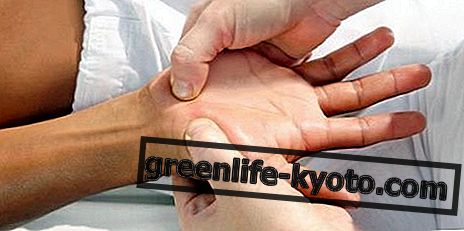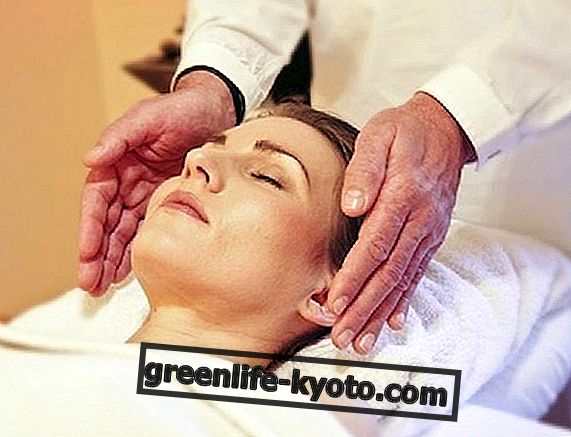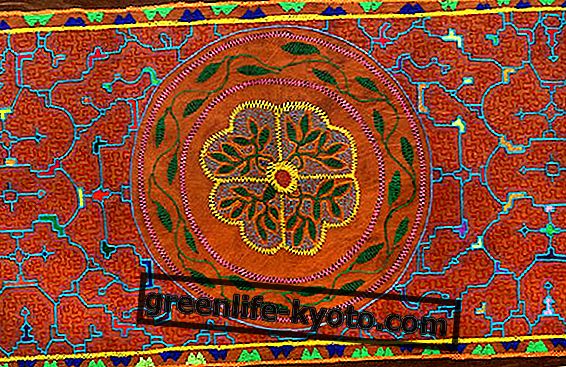
Treating a topic like anxiety is not easy because a few lines are not enough to explain its complexity and the many facets it can take.
Surely mental distress exists and cannot simply be dismissed as a kind of "dark evil", a tile that has fallen on our heads, something "other" by us for which it is enough to take some miracle pill and the disease disappears.
We must realize that it is part of us, a part that is unbalanced and that can also be threatening and debilitating, but that surely urges us to change often profoundly and radically.
For more than a hundred years we have been studying anxiety disorders (it was Freud who made a very vivid description of a panic attack) the most common of which are: panic attack, agoraphobia, generalized anxiety disorder, stress disorder, phobias etc.
It can be said that anxiety has no more secrets with regards to the biochemical mechanisms that underlie it, but as far as its treatment is concerned there is still much to do precisely because it is not enough to administer a drug to solve its causes.
Anxiety must be treated both physically and "subtly", in other words "holistic".
What is anxiety
Anxiety is a physiological psychic event, the moment in which the organism prepares for an alarm, so it is a normal phenomenon that we all experience although to a variable extent and frequency.
The alarm reaction is natural and necessary, in humans and animals, for survival; in the body there are precise chemical transformations that produce general physical modifications such as to allow to face the threat in the best way by attack (direct elimination of danger), or escape (removal from the threat).
The physiological reactions are manifold: there is a redistribution of the blood so this flows more into the body districts that need it most to cope with the attack or flight reaction (for example muscle tissue), the heart rate increases, as well as the frequency respiratory, the mouth becomes dry, the secretion of digestive enzymes decreases and the blood is deviated from the digestive system to the muscular system, the pupil dilates, the beta brain waves (at high frequency) increase inducing a state of general alert, the alpha waves (low frequency), associated with mental tranquility, decrease; improves the level of attention and the quality of the service.
Everything is perfectly normal and physiological: anxiety allows and facilitates survival and therefore has an important adaptive function. In children it represents a fundamental stage of growth: it accompanies detachment from parents, but at the same time it also adapts and socializes. In healthy adults, anxiety is followed by appropriate behavioral choices. It can be considered physiological if it is of short duration and justified by the expectation of a danger or a real challenge.
Instead, it is pathological when it lasts over time and assumes the appearance of an imminent danger without the identification of an object that is legitimate, to the point of reaching levels of anxiety and phobia. It is different from the fear that instead refers to an immediate, external and real danger and leads to defense reactions.
Pathological anxiety
Pathological anxiety is that which, over time, reaches levels that produce negative effects: it reduces performance, to the impossibility of any performance and to paralysis, invades the physical, relational and psychic life.
In milder forms the subject feels uncomfortable, tense, restless, unsatisfied. In the more serious ones one can experience feelings of unreality, heeling and vertigo, as if the legs did not hold up and the sense of balance was lost.
Panic is the most acute, intense form, often having the characteristic of a rapid and sudden onset crisis. Anxiety can therefore have multiple manifestations that are associated with a rich symptomatology. The anxiety symptom and the three aspects on: physical-psychic-neurovegetative The symptom of anxiety is very complex as it draws its origins from individual, family, genetic and in general terms, from the events of life. The anxiety symptom has essentially three aspects: one physical, one psychic, and one neurovegetative.
Psychic symptoms Sensation of apprehension, fear, terror, restlessness, irritability, difficulty in concentration and attention, pessimism, distrust in oneself and in one's abilities, state of continuous and unjustified concern, feeling of danger, of confused mind, insomnia, reactivity excessive at the slightest stimulus.
Physical symptoms
Stomach cramps, intestinal disorders, wheezing, tremors, dizziness, muscle tension and pain, tremulous voice, flushing of the face, tiredness.
Neurovegetative symptoms
Sense of suffocation, shortness of breath, palpitations and increased heart rate, increased arterial pressure, sweating, cold or sweaty hands, salivary changes and dry mouth, dizziness, nausea, diarrhea, sense of heeling, sudden flushing or cold, need to urinate often, etc.
Anxiety causes a decrease in thoughts, concentration and attention, generating energy blockages, preventing us from thinking about how to effectively solve situations. In reality, it is not a real block: when we are in an anxious state, as we breathe faster, we also think faster; the negative fact is that we focus only on the problem, revising it, revisiting it, so that the only way out is the ESCAPE.
Anxious people overestimate the harmful and dangerous potential of events and underestimate their ability to cope and resolve them. Since the anxious person is led to look for a life of departure, whenever a new anxious attack will arise in the future, the reappearance of that escape behavior that has worked in the past will always be the preferential way. What are the causes of anxiety? Some diseases like those of the thyroid, for example, can cause anxiety.
However the true generalized anxiety syndrome has no documented organic dysfunction. Unfortunately the mechanisms that cause the disease have not yet been identified and the research routes are oriented, as in panic attacks, to identifying which substances belonging to the brain behave as "anxiety-provoking", ie generating anxiety.
The drugs prescribed for this syndrome by doctors (with caution, given the possibility of causing dependence and abuse, as well as unpleasant side effects) are benzodiazepines, that is the so-called anxiolytics. But to quell the anxious symptomatology with psychiatric drugs never means to heal from anxiety, that is from its first causes, moreover it can cause frustration when after the suspension, the symptom reappears.
The student's anxiety before an exam is therefore physiological and serves to increase the level of attention and therefore of performance; the discomfort, the tension, the restlessness are the signal of the andrenaline in circle that will allow to overcome to the best the test.
When, on the other hand, it is excessive and reduces mental clarity and concentration until it reaches a real physical symptomatology and the total block must be understood and healed. First of all it must be remembered that the sensations it causes are not dangerous, the pulse runs, the heart beats loudly, the nausea, or vertigo, the desire to cry or scream or knock on the table are not signs of a dangerous illness. Situations that evoke anxiety are never objectively dangerous.
Pathological anxiety appears only when the person facing a challenge tends to exaggerate their difficulties by mentally insisting on all the negative consequences of a bad outcome, by flying over or minimizing their abilities.
Therefore anxiety leads to a distorted interpretation of reality : we imagine dangers that do not exist or could be faced with efficiency if we were not incapacitated by our own sensations and reactions. The anxious reaction is correct because it is the physiological reaction to the terrible thoughts and images that the person has produced within himself, these thoughts and these images are associated with the situation that are not correct.
Certain thoughts and certain images automatically accompany the anxiety that immediately descends as soon as the images and thoughts are consciously changed.
What are generalized anxiety disorders
A widespread and persistent "state of tension" is defined as generalized anxiety, lacking moments of crisis as in panic attacks but characterized by a general psychological-bodily malaise that lasts even for a long time (months or years). The possible symptoms of generalized anxiety have been grouped into four categories, let's see them bearing in mind that it is rare for them to appear together:
- Motor tension, highlighted by tremors, muscular pains, inability to stand still and relax, trembling eyelids, easy fatigue.
- Vegetative hyperactivity (which affects that part of the nervous system that cannot be controlled by the will): the symptoms are tachycardia, dizziness, dry mouth, increased sweating, tingling in the hands and feet, digestive difficulties, sensation of heat and sudden cold, lump in the throat, difficulty swallowing, increased breathing, cold and wet hands, diarrhea, "empty" or "light" head, knot in the pit of the stomach.
- Psychological state of expectation, characterized by fear, brooding, expectation of unpleasant or tragic events for oneself and loved ones.
- Mental vigilance, characterized by hyperattention that paradoxically becomes distraction, difficulty concentrating and memory, impatience and irritability.
Generalized anxiety, as you can imagine, is a disorder that often greatly limits performance and productivity and in general the quality of a person's life, and complications can be: a depressive syndrome due to the inability to live a peaceful life; alcohol abuse because this substance "places" the anxious state; abuse of anxiolytic drugs.
Anxiety: effects on the autonomic nervous system
How is it possible that anxiety, in addition to the psychological symptoms described, is also revealed through many organic symptoms? The answer lies in the results of research on the human nervous system and its links with psychological behavior. For the balance of numerous functions of the body in the face of the multiple stimuli of the environment, the autonomic nervous system is of great importance: it is a system that acts precisely autonomously, that is, without voluntary control and without the individual being aware.
At the level of the body, with the exception of the brain, the system is divided into two parts: sympathetic and parasympathetic system. Both connect to many organs of the body (heart, blood vessels, bronchial and pulmonary muscles, stomach, intestine, male sexual organs, all glands, urinary bladder, skin) acting on them synergistically to always ensure the best functionality of face any environmental stimulation.
In particular: the sympathetic system produces responses in the organs that prepare for activity (or emergency) causing, for example, an increase in heart rate, blood pressure, blood sugar (blood sugar) and, more generally, increased activation and availability of energy. The parasympathetic system, on the other hand, produces modifications at the same organs, generally in the opposite direction.
The functionality of the two systems is modulated by nerve centers located in the brain, a veritable operative control center and an analyzer of the needs of the whole body (remember: without the will). In recent years it has been shown that the centers mentioned above are directly influenced by a particular area of the brain called the limbic system which has the function of activating and manifesting emotions. Therefore, to each emotion there corresponds not only an emotional and behavioral reactivity but also a response on the part of the organs of the body mediated, in fact, by the autonomic nervous system.
This is why, in conjunction with anxiety and terror - reported by those suffering from panic attacks, or with the widespread and persistent state of tension of those with generalized anxiety - apparently only bodily symptoms such as palpitations, knot appear throat, tremors, dizziness, tingling in the hands and feet, digestive difficulties.
All this led then to consider anxiety as the most corporeal psychological disorder there is and to stimulate research for a better understanding of all those diseases that are still defined as psychosomatic (such as gastritis, colitis, psoriasis ...) in which anxiety (along with psychological problems that the patient is more or less aware of) seems to play a fundamental role.
Nervous colitis or irritable bowel syndrome
This syndrome has a clear psychosomatic origin and is very linked to the person's anxious state, it is a real alarm bell sounded by the colon, that part of the intestine that is particularly sensitive to hectic life and stress.
From all this we can understand how these disorders (swollen belly, meteorism, etc.) are real somatizations of our anxieties and the constant stress to which we are subjected with modern life. Our body is asking us for help, listen to it and help it.
In addition to the psychological factors we have seen, colitis can arise or worsen also due to:
- intolerances or hypersensitivity to certain foods;
- altered intestinal flora;
- pathogenic microorganisms (fungi);
- parasites.
It affects 1 5% of the population, with a double frequency in women .
How the mind can make the body sick
The psycho-biological conception of life must be carefully considered. Since the health of the body is closely related to the state of health of the soul, the disease has been called a defect of the soul.
Every tension always has negative repercussions on health. The repercussion mechanism is quite simple. The emotional stimulus acts on the brain, so every apprehension and every fear are shocks that the psyche undergoes which, through the brain, as a reaction, imparts orders of defense, protection, salvation to the nerves; orders that reach all the viscera. These, as a defensive attitude, contract because fear is contraction, shrinkage, closure.
"I miss my breath, my heart is pounding, I had a hold on my heart" are expressions that are frequently heard by those who are subjected to these disorders. They also suffer from vertigo, tremors and fainting. Some have too high or too low pressure. Frequent repetition causes wear.
The consequences of all the negative states, while they reflect on health, harbor the thousand evils that lead to unexpected diseases. Never as today are we offered such a large number of inventions that save time, yet today we never find the time to do so many necessary things. The consumer society is the society of urgency and anxiety.
Whenever a man faces a difficulty, he needs the strength to overcome it. Then, something moves in him, a stimulating anxiety like the momentum of someone who takes a run-up to jump over an obstacle. This anxiety is normal and beneficial. But there is also an anxiety that is agitation and urgency: the rush of life today. This is negative anxiety.
Anxiety can lead to real illnesses due to the change in chemistry and in the organic structure in the body of people who were perfectly normal. Everything was in order, first, but since the emotional shock or the trauma hit the person due to an unpleasant fact, the ailments begin. Psychogenic disorders, that is of emotional origin, are the starting point.
What the Chinese medicine based on acupuncture tells us
One of the most fascinating statements (supported by a clinical history of thousands of years and still current) is that to every organ of the human body corresponds a "psychic content", or better, "even within the organs mental and energy are deposited. According to the Chinese in the heart, for example, there is mental energy proper, in the stomach and in the spleen thought is conserved, in the lung dwells intuition, in the kidney life is given to the will, in the liver lies strength of decision.
Emotions are placed in the same way so that, for Chinese medicine, an emotion influences (and vice versa) a corresponding organ, that is: the heart feels joy, the kidney is fear, the liver is anger, the lung is sad and anxiety, stomach and spleen, brooding and fixed ideas. Well the anxious syndromes arise from energy imbalances, toxicity, malfunctioning of organs that damage the respective mental energy (for example, an intoxicated liver diminishes the strength of decisions, or the fatigued kidneys crack the will, and so on).
Even the excesses of emotion lead in the long run (sometimes in an acute way) to an energy consumption of the corresponding organs so that the various anxious symptoms can be associated precisely with those, with the respective emotion considered in this case harmful.
Here then is anguish, indecision, fatigue born of the renal energy weakened by fear; the "empty head", the lack of courage, indecision, all referring to a malfunctioning liver damaged by anger; the inability to reflect, the loss of memory, caused by the stomach, spleen, pancreas, "emptied" by fixed ideas, by continuous brooding.
Food is important
If the anxiety syndrome is prolonged over time, health can suffer damage and the biochemical and physical changes that are physiological if limited over time can cause pathologies in the long run.
Without the necessary digestive and enzymatic secretions, food, in the digestive tract, will begin to undergo fermentation and putrefaction, blocking the selective absorption of many important nutrients in the small intestine, this situation, combined with increased bacterial activity, will induce a further stress on the immune system making it more vulnerable to the onset of diseases.
Indigested proteins will be able to penetrate through the intestinal mucosa barrier causing the onset of allergic reactions, the stomach will be able to meet the ulcer; in those who are particularly predisposed, problems of a cardio-circulatory nature may arise and so on. Therefore it is very important to intervene on anxiety and interrupt the cycle (even the anxiety of anxiety can be invoked) with various means that are as “ecological as possible” and without side effects .
Nutrition is the first fundamental tool that everyone has at their disposal to improve their state of well-being and health. Orthomolecular nutrition studies highlight the importance of some substances for rebalancing the nervous system: In particular, four amino acids are very useful: histidine, tryptophan, glycine and taurine.
Anti-anxiety foods
- Whole grains: provide slow-release energy, contain magnesium, which counteracts fatigue, anxiety, depression; zinc, a powerful antioxidant that improves concentration, selenium that stimulates the immune system;
- Protein: preference for white meats like chicken and turkey, rich in tryptophan, an amino acid precursor of serotonin, the wellness hormone. The fish for the contribution of omega 3 that favor the vitality of the central nervous system and positively intervene on the release of adrenaline and cortisol, in addition to keeping the arteries clean, the white fish also contains the B vitamins that improves resistance to stress . For dairy products, opt for low-fat ones, such as yoghurt and lean ricotta, or milk flakes, but also eggs and beans, parmesan that contains tyrosine, an amino acid that produces a stimulating action on the body that can increase the memory and mental alertness, relieve pain, stimulate sexual energy.
- Fresh seasonal fruits and vegetables: lettuce, legumes, pineapple, kiwi, bananas, figs, apricots, blueberries and fresh seasonal vegetables, rich in fiber and mineral salts, in particular magnesium and potassium, which keep the insulin level constant .
- Polyunsaturated fatty acids: contained in oily fruits, nuts, almonds and hazelnuts and in fish: salmon, cod, sardines, tuna and swordfish, which plays an important action on the well-being of the veins and on the heart and brain function.
- Dark chocolate: contains serotonin which regulates mood and has calming properties. Recommended doses: 2/3 squares in the evening, to gratify the palate and prepare us for sleep.
- Raw vegetable oils: extra virgin olive oil, linseed or sesame oil, which tone the nervous system. Animal fats should be avoided.
Foods to avoid
There are foods that make the anxiety worse and are:
- Fried, refined sugars, high glycemic index carbohydrates, alcoholic beverages, refined flours, coffee.
Such as natural remedies for anxiety
Among the natural remedies for anxiety, the use of medicinal plants can be of great help, in particular it is possible to rebalance the soil and therefore the constitutional tendency to the anxious phenomenon, I list some that are:
- Hawthorn: has sedative and spasmolytic properties of the central nervous system and of the sympathetic, acts on psychophysical stress and helps in case of tachycardia, palpitations;
- Linden: sedative, anxiolytic, contains agitation and emotionality. Particularly indicated in the insomnia of nervous, restless, hyper-excited subjects with evening euphoria, worried, anxious;
- Lemon balm: useful in cases of depression, anxiety, melancholy, insecurity, emotional vulnerability, hypersensitivity to environmental influences, anxiety and mnemonic insufficiency often related to these states. It has a strong tranquilizing action;
- Valerian: has a sedative and hypnoinducing action, is used in dystonia with spasmophilia. In the case of headaches, gastric spasms and in anxious states;
- Griffonia: the active ingredient of griffonia is 5-hydroxytryptophan (5-HTP). This amino acid, contained in the seeds of griffonia simplicifolia, is a precursor of serotonin, the main neurotransmitter involved in the regulation of mood. By increasing serotonin levels, 5-HTP proves to be invaluable in mitigating depression and various emotional disorders.
The most effective solutions to regain wellness is quantum medicine
The key to rediscovering well-being and bringing back the balance is "holistic" thanks to the check-up you can find out in detail the cause (s) of the problem and define a complete profile on the psychophysical state.
The good news is that today, thanks to the quantum bioresonance and biofeedback check-up, it allows us in detail to discover, the cause (s) of the problem and define a complete profile on the general psychophysical state, identifying the value of stress and anxiety ( high or very high: "emergency"), but above all the causes and somatizations in the body, in addition to the autonomic nervous system which is its protagonist.
Every organism produces its own chemistry, the symptoms are different from person to person, like the imbalance of information of the meridians and of the endocrine system and much more. The quantum check-up with SCIO instrumentation allows us to discover, in detail, the cause (s) of the problem and define a complete profile on the psychophysical state, identify the risk of nascent pathology, correct incorrect information that creates imbalance and test natural remedies more suitable for the person's chemistry.
The consequent therapy is carried out by operators who are experts in quantum medicine and bioresonance since with this method it is possible to act by rebalancing the organs involved, dispersing energy overloads, calming the mind, calming the whole body in general.
Nutripuntura, acupuncture without needles
It is a nutrition and cellular information called Nutri, the goal of all endocellular nutrition, 38 in all, is to provide directly to an organ, or to a specific sector, the electromagnetic information necessary to activate its natural self-regulation .
Their effectiveness, as precise as that of acupuncture needles, is immediate for the sectors and organs they want to support. The action of every Nutripuntura food is therefore concentrated on the target organ without interfering in other areas to bring the correct information back to the body. The appearance of a symptom is a warning signal, the result of an information disorder that activates the function of an organ.
In fact the organism is not only made up of a set of organs with different functions (the hardware), but also of numerous programs, containing the information necessary to regulate the functioning (the software). This nutrition has no contraindication and is totally biocompatible, in the form of mini-tablets (with a pleasant taste), to be chewed two or three times a day. Excellent results for all areas of the body to help, especially for the problem of anxiety and stress.
The information reported here is only for the purpose of making information, it is not referable to prescriptions or medical advice.
Bibliography and other sources
Patrick Vèret, Yvonne Parquer, 2007, "Manual of Nutripuntura Physiology and Cellular Information", Ed. Tecniche Nuove, p. 240-241. Catia Trevisani, 2010, "Taking care of Naturopathy" Edizioniioni Enea, pag. 93- 94 - 102 Anxiety and stress - website: www.progettobenesserecompleto.it












